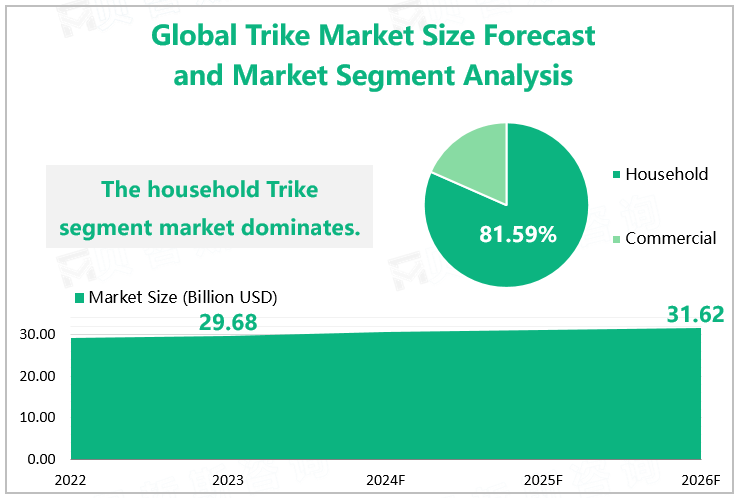A trike, usually consisting of a trike body and two rear wheels, is a type of vehicle. Compared to two-wheeled vehicles, trikes have better stability and load capacity, and are therefore commonly used for transporting goods or personnel. Meanwhile, trikes are also a common means of transportation, especially in crowded cities, favored for their compact and flexible characteristics. In addition, there are various variants of trikes, such as electric trikes and motorized trikes, which are also widely used in the fields of transportation and transportation.
Overview of Market Development and Analysis of Segmented Markets
In recent years, thanks to the increasing attention of consumers towards convenient and environmentally friendly modes of transportation, as well as the continuous progress of related technologies, the global trike market has shown a steady growth trend in recent years. According to our research data, the global market size of trikes reached $29.68 billion in 2023. In the future, electric trikes are expected to become mainstream products in the market. With the enhancement of environmental awareness and the advancement of battery technology, electric trikes will significantly improve in terms of range, performance, and cost, which will bring greater development space to the market. It is expected that by 2026, the global market size of trikes will increase to $31.62 billion.
Global Trike Market Size Forecast and Market Segment Analysis

Source: www.globalmarketmonitor.com
Analysis of Market Development in Major Regions/Countries
In terms of regional distribution, the Asian market dominates the global trike market. In the Asian market, China, as the largest producer and consumer of trikes, continues to expand its market size. According to our data, the size of China's trike market in 2023 was $9304 million, accounting for 31.34% of the global market size. In addition, the Indian trike market also held an important position in the global market, with a market share of 22.99%. The European and North American markets also had a certain market share, but their market development speed is relatively slow due to local regulations and consumer preferences.
